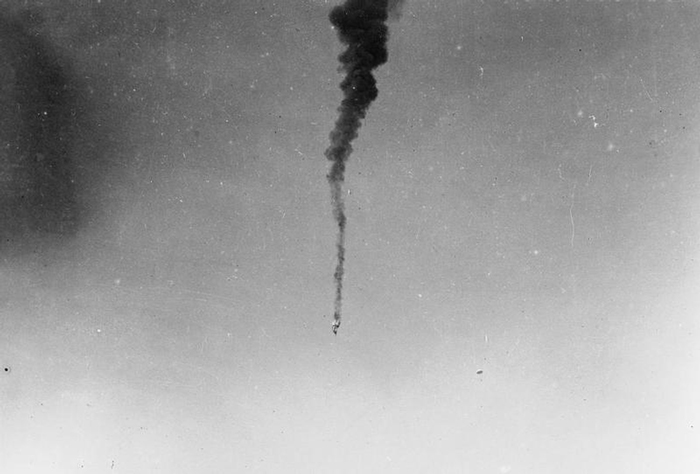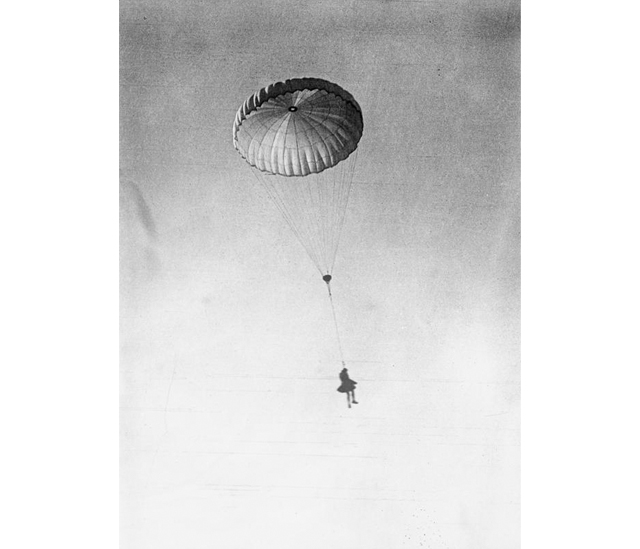Did you know that the use of parachutes was highly contentious during the First World War?
Whilst practical parachutes were originally invented in the late 18th century the use of them from airplanes was still in its infancy at the outbreak of war. Whilst the various nations involved began to experiment with the military potential of flight, the use of parachutes was highly controversial.

German observation balloon falling to earth in flames. Westem Front. Note observation officer descending by parachute. © IWM (Q 54468)
Observation Balloons were a favoured adaptation of existing technology. Filled with hydrogen gas they were able to float high into the air and afford the attached observer with a clear view of the battlefield to help guide the targeting of artillery. However, because of the explosive nature of hydrogen gas, an attack on the balloon would often cause it to burst into flames and plummet to the ground. Observation crews were the first men to be issued with parachutes to ensure their survival in such circumstances.
Pilots in the Royal Flying Corps, however, were not issued with parachutes. Initially the design of plane cockpits meant there was barely room for the pilot as it was, and no room for a bulky parachute. The extra weight of the parachute was also said to have had a negative affect on the plane’s fuel efficiency and handling.
Unofficially however, parachutes were seen as being an easy escape route for pilots if their plane ran into difficulty. In a report into the possible use of parachutes the Air Board declared:
“It is the opinion of the board that the presence of such an apparatus might impair the fighting spirit of pilots and cause them to abandon machines which might otherwise be capable of returning to base for repair”.
With the option of escaping a burning aircraft removed, it was thought that pilots would fight harder to ensure they landed safely. In reality many pilots had to face the option of what to do in the event of their plane being heavily damaged. Some ensured their revolver was to hand to provide a less painful option than burning to death.








